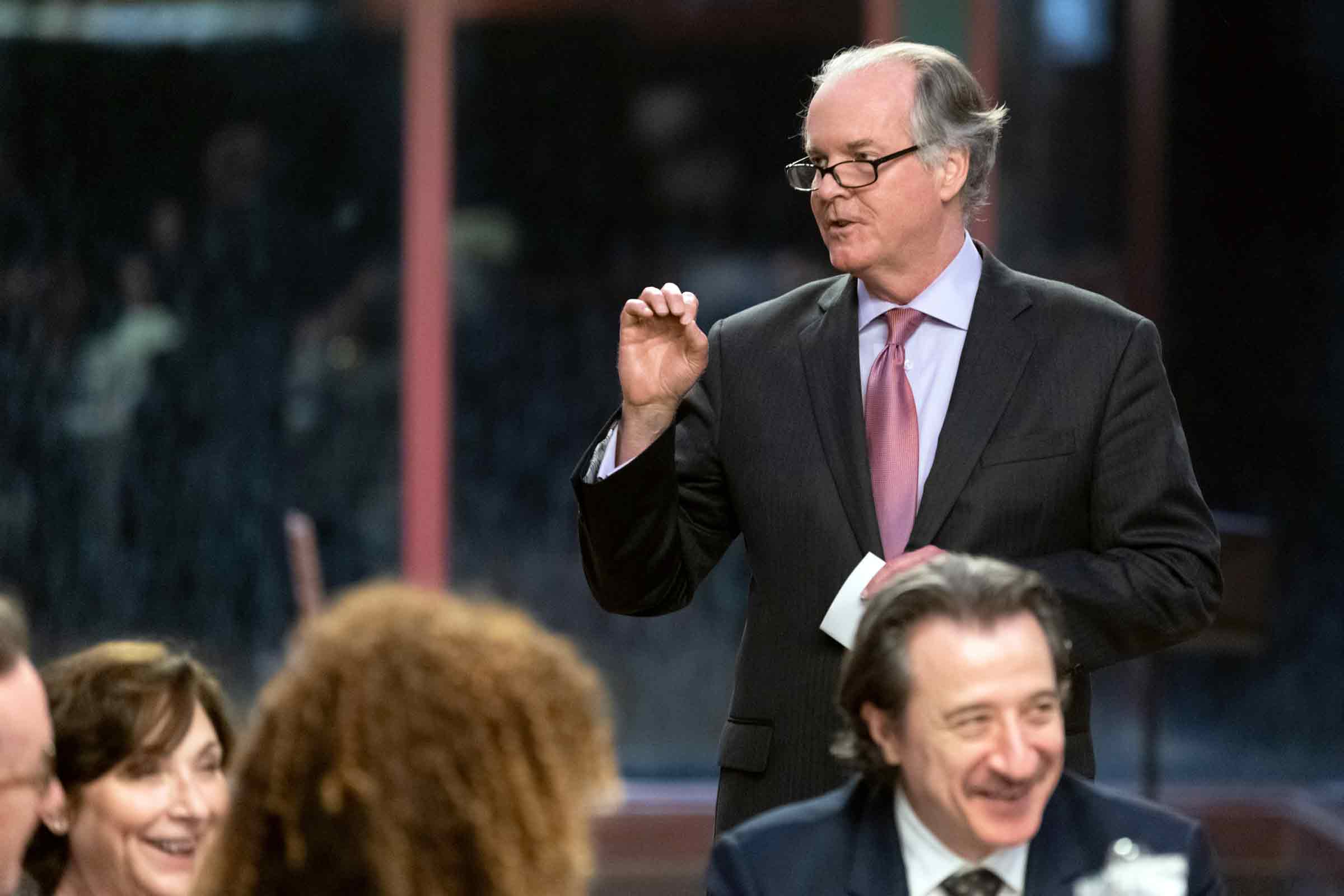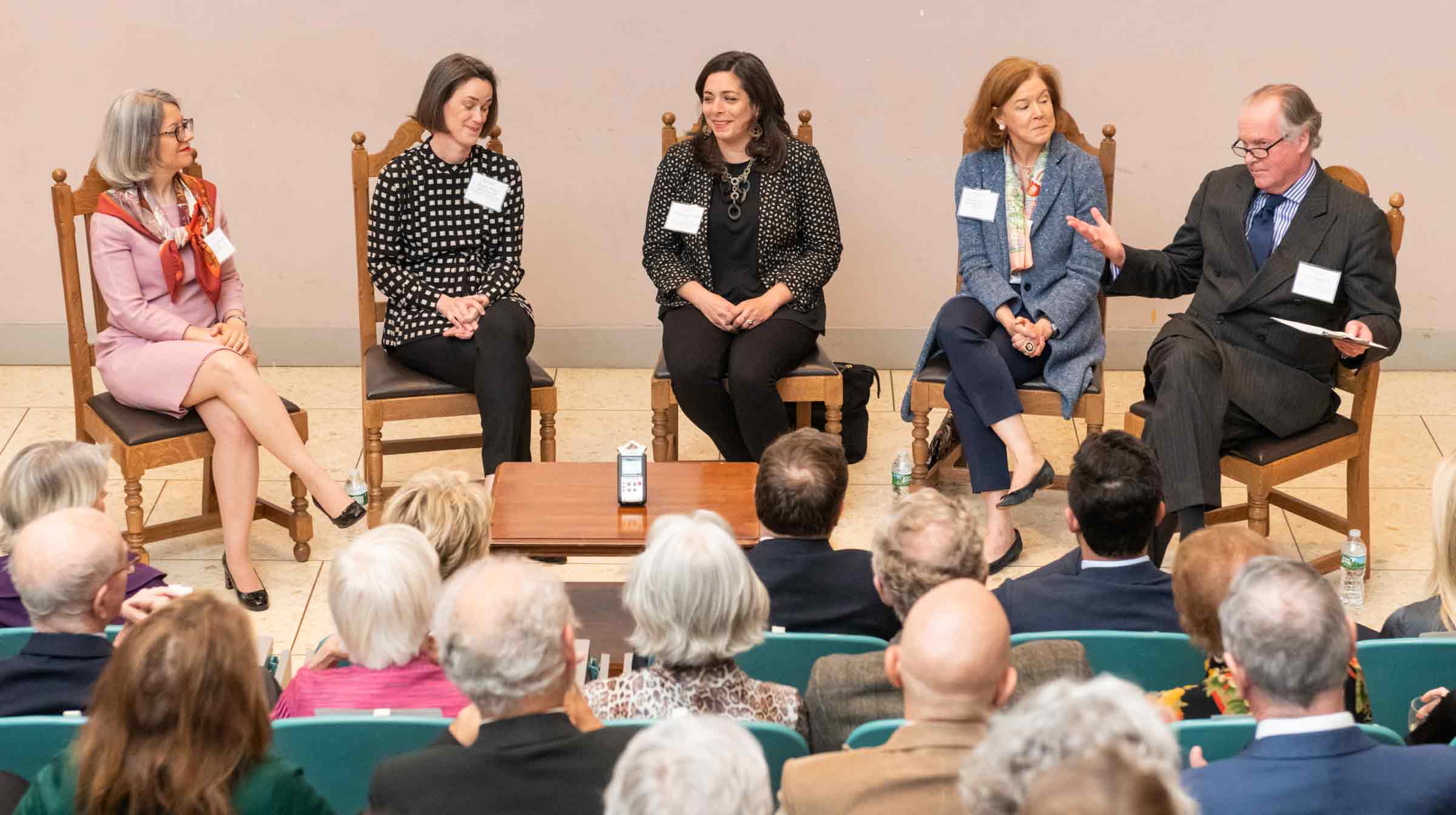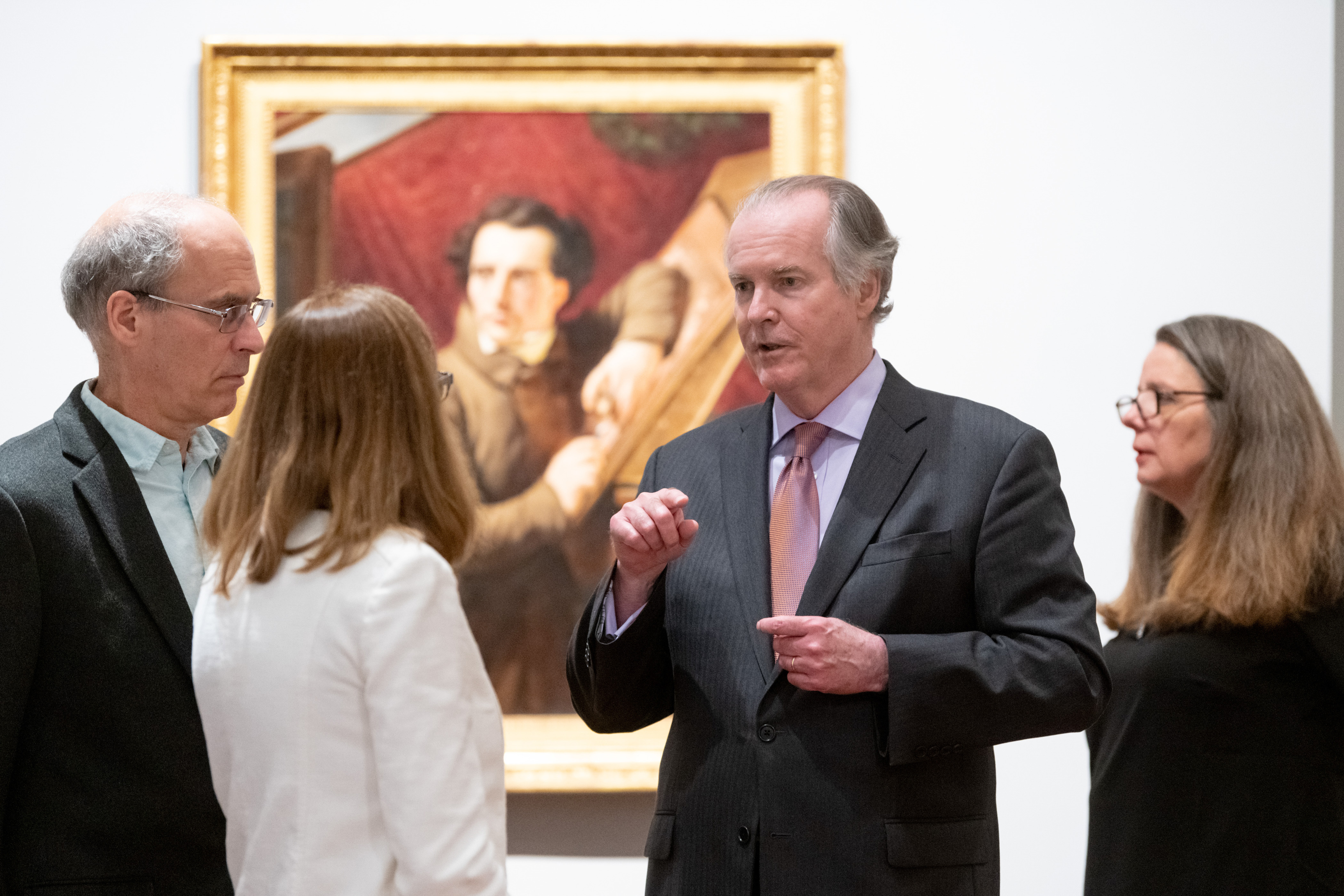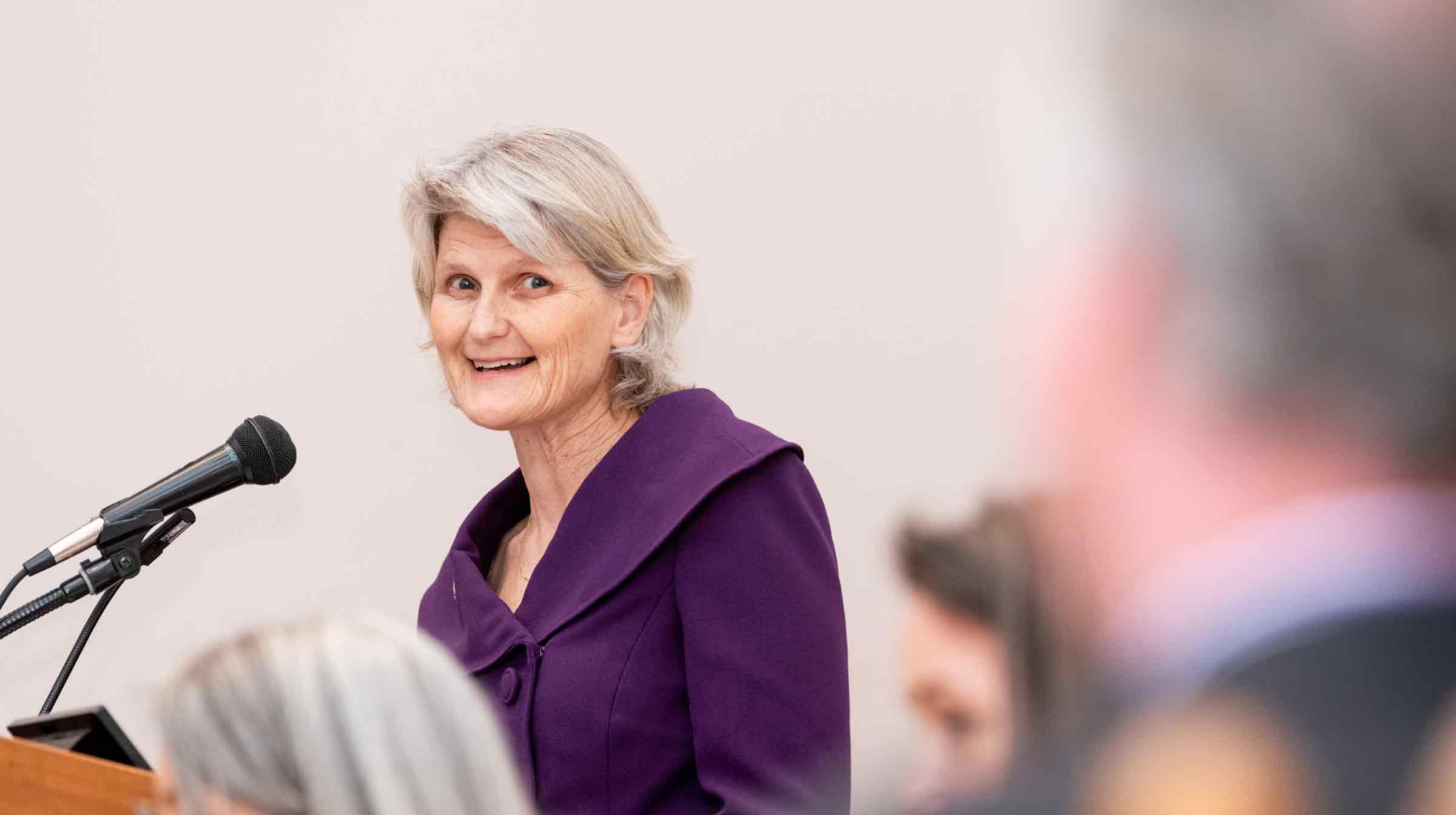Honoring the Legacy of James Mundy
Honoring the Legacy of James Mundy
Dozens of alumnae/i and other friends and supporters of the Frances Lehman Loeb Art Center returned to the Vassar campus on April 26 and 27 to pay tribute to the man who transformed the museum into a national treasure.

An exhibition, titled “An Era of Opportunity: Three Decades of Acquisitions,” opened on April 26 to honor James Mundy ’74, who will complete 28 years as the Anne Hendricks Bass Director of the Art Center when he retires in August. The exhibition was curated by Mary-Kay Lombino, the Art Center’s Emily Hargroves Fisher ’57 and Richard B. Fisher Curator and Assistant Director of Strategic Planning; Patricia Phagan, the Philip and Lynn Straus Curator of Prints and Drawings, and Elizabeth Nogrady ’99, the Andrew W. Mellon Curator of Academic Programs.
Arranged roughly chronologically, the exhibition begins with the twelfth century and an early, exceedingly rare print, called One Hundred Images of the Amida Buddha, installed among later Asian scrolls and sculpture. Moving through early Northern European art and fine European drawings and prints from the sixteenth to the nineteenth centuries—including a cache of Old Master Italian drawings, Mundy’s scholarly specialty—and into 20th and 21st century art, the exhibition reflects the director’s leadership in identifying and acquiring some of the greatest works of the museum’s permanent collection.
The two-day celebration began April 26 with a lecture at Taylor Hall by Susan Taylor ’77, Montine McDaniel Freeman Director of the New Orleans Museum of Art and Chair of the Advisory Board of the Frances Lehman Loeb Art Center. In her talk, titled “Looking for Art in All the Right Places: Three Decades at the Frances Lehman Loeb Art Center,” Taylor described how and where Mundy had acquired nearly 9,000 pieces of art for the museum. From Mundy’s arrival in 1991 until his pending retirement this summer, the holdings of the museum swelled from around 12,500 to over 21,000.

On April 27, Mundy moderated a panel of alumnae/i who are luminaries in the field on the future of museums in America titled, “Directions for the Next Generation.” Members of the panel were Andaleeb Badiee Banta ’97, Senior Curator at the Baltimore Museum of Art; Whitney Wilson Donhauser ’89, President and Director of the Museum of the City of New York; Heather Lemonedes ’93, Chief Curator at the Cleveland Museum of Art, and Allison Whiting ’86, Director of Museum Services for Christie’s Auction House.

Lombino said the special exhibit included more than 90 works of art in all genres that typified the insight Mundy had in making his acquisitions. “We’re reviewing how James assembled all these items, and their significance,” she said. “Many of these are not often displayed as part of our regular collection.” In addition to the exhibition itself, Lombino noted that all of the works of art that Mundy acquired that are currently on display throughout the museum are marked with a yellow sticker.

“It’s an exciting moment in the history of the Loeb,” Lombino said. “It affords us the opportunity to look back to see how far we’ve come—and we’ve come an incredibly long way—as well as a time to take stock and think about what lies ahead.”
Mundy said he was honored by the recognition as he prepared to step down as director. “If the mission of the College has been advanced at all owing to my work with the Art Center, that’s a source of satisfaction,” he said. “If it’s appreciated by the administration, faculty, students, and alumnae/i, then that’s good enough for me.”